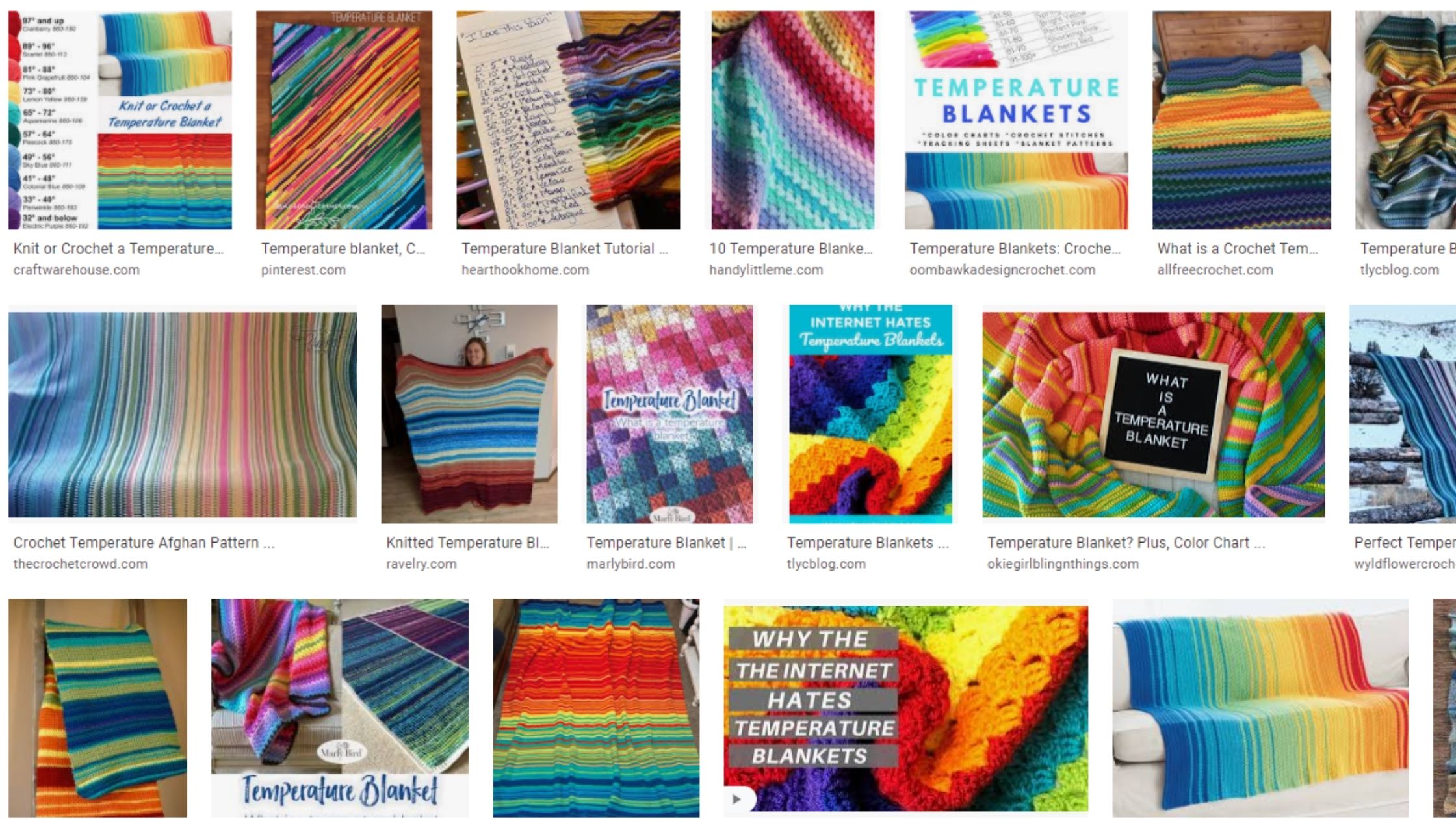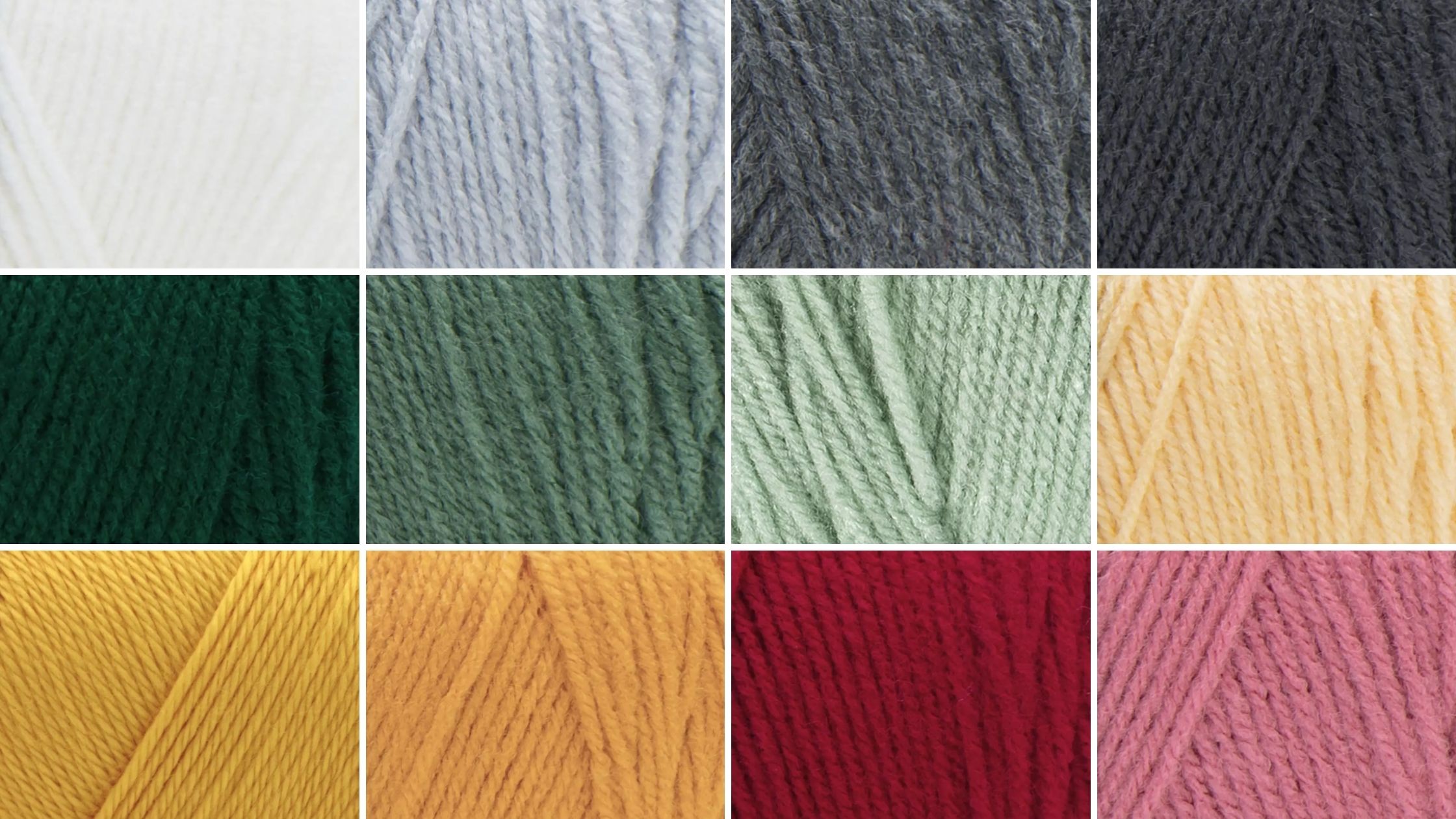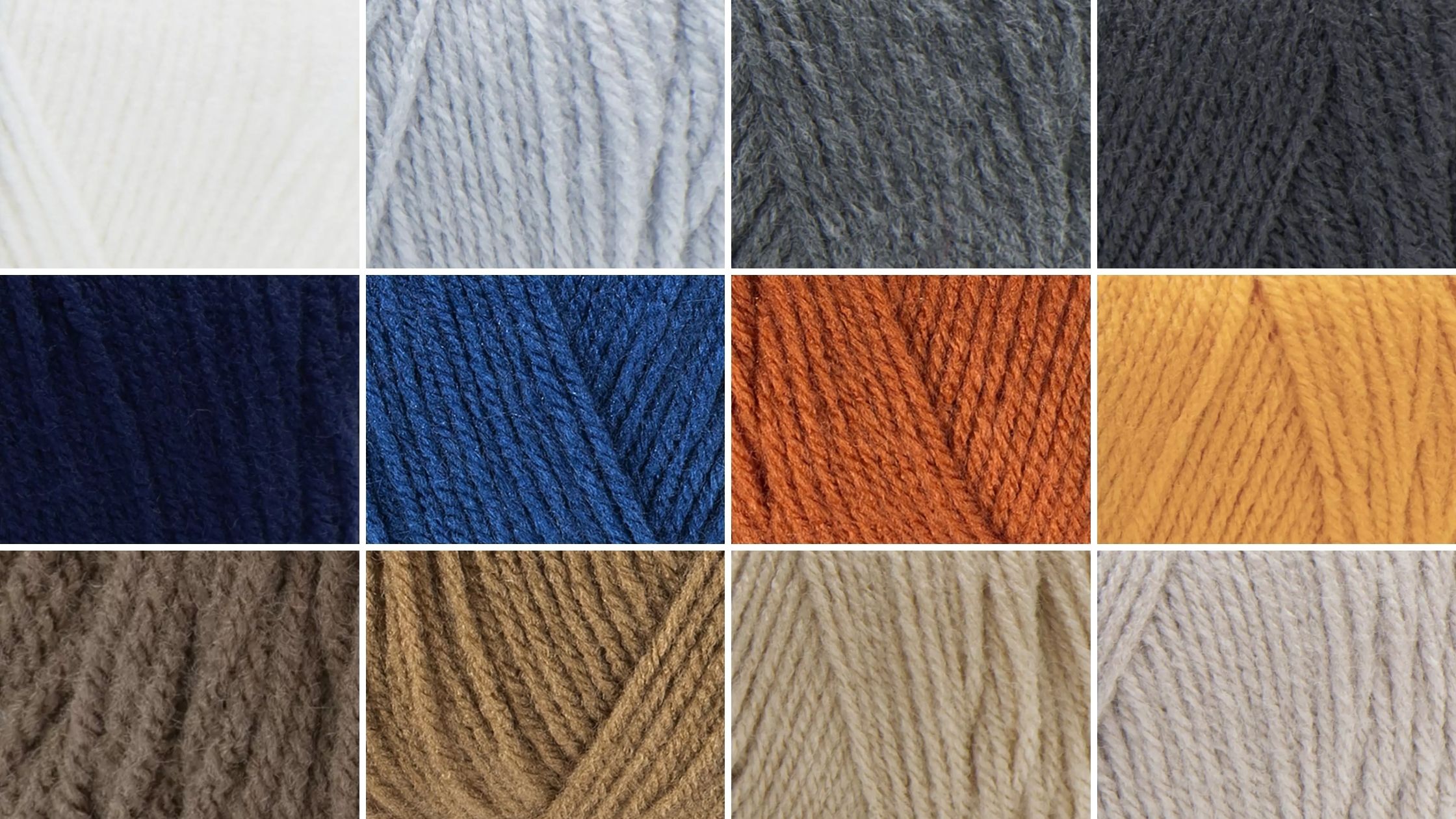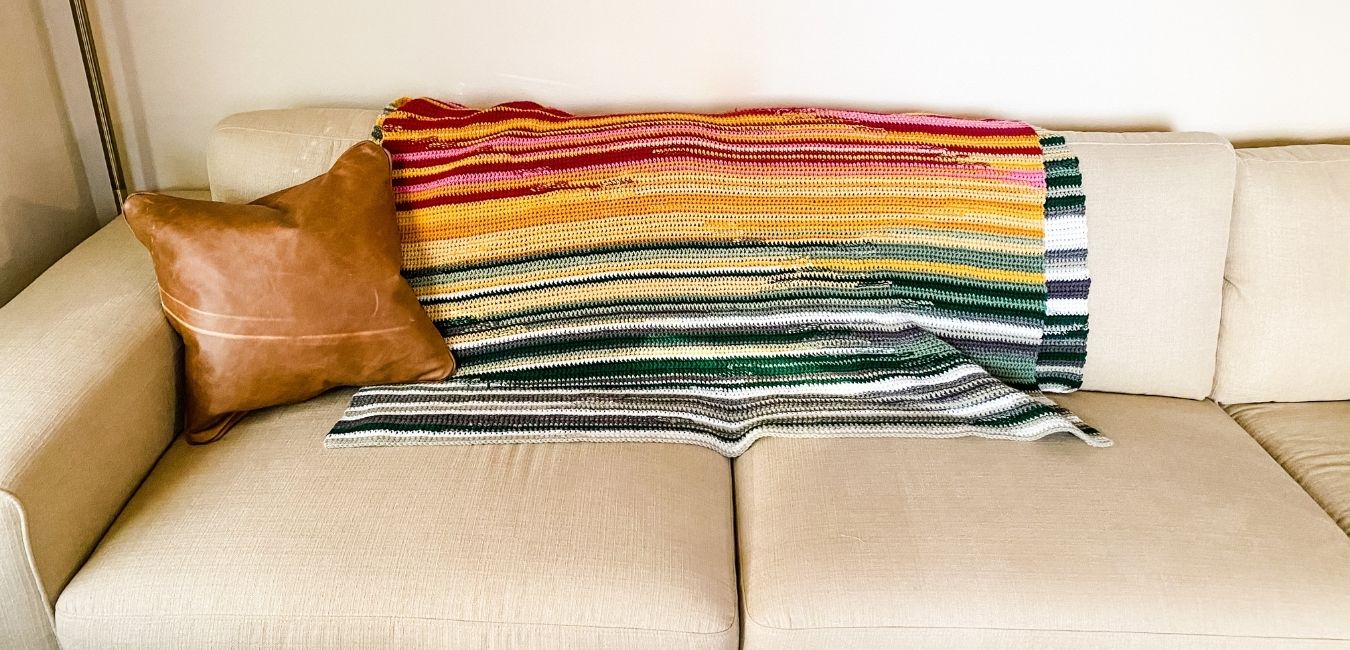Temperature blankets seem to be a popular project within the crafting community. They have taken up popularity among knitters, quilters, and crocheters. But what is this fun little project and how do you go about making one for yourself. This post looks to answer all those questions for you and help you make a crochet version of your own.
What is a temperature blanket?
A temperature blanket is a handcrafted blanket using multiple colors that represent temperatures throughout a specific year. These blankets can be made with any craft and can take a variety of looks/shapes. They can be made with stripes, squares, triangles, hexagons, or rectangles. The most common type of temperature blanket, and the type that I make, are crocheted striped blankets.

The year that is picked for the temperature can be a significant year, such as the year your child was born or the year you were married, or it can be the current year. The biggest thing you will need is the ability to gather the weather data from whatever year you select. A year from too long ago may not have temps available online.
How to make your own crochet temperature blanket
Picking colors
A temperature blanket consists of many colors. The standard temperature blanket consists of a rainbow of colors, from purple/blue to red/orange. These colors are derived from the colors you would see on a weather forecaster’s map to visualize the temperature outside. This is the same concept used for a temperature blanket. The purples and blues would indicate cold temps and as you move through the rainbow to the oranges and reds you get the hotter temps.
You don’t have to use a rainbow though. You can use any set of colors that you like. You could go monochromatic and use multiple shades of one color. You could use colors that coordinate with your home décor. You can use the recipient’s favorite colors (if the blanket is not for yourself). There’s no rule for what colors you pick for your blanket.
When you do pick colors, you should choose ones that transition from one to the next and you will want to use 10 – 12 different colors. So, let’s say you were going to do a monochromatic gray blanket, you would want your colors to go from light gray, medium gray, dark gray and shades in between. If you have 4 different colors, you will want your shades of each color to go from light to dark and transition between two colors with similar shades (light to light and dark to dark).
Here’s an example of the colors and transitions I made for a blanket in 2019 as well as the colors and transitions I will be making in 2021.

My 2019 Temperature Blanket Colors

My 2021 Temperature Blanket Colors
Determining temperatures
Once you pick some colors, the next step is to assign temperatures to the colors. The first step in this process is determining average temperatures for the year you are making a blanket. If you are making a blanket for a past year, you can just search online for the temperatures for that year. You will need all 365 days worth of temps, but for this step, just figure out the hottest temps and the coldest temps. If you are going to make a blanket for the coming year, you will need to just get the recent averages for the year. I use this site to do my research: https://weatherspark.com/
Assigning colors to temperatures
Next, you will determine the weather ranges for your colors. Two colors will be for your hottest days and your coldest days. Where I live, the hottest average is about 92 degrees, so I will have one color that is for any day that hits 90 degrees or higher. The coldest average is 38 degrees, so I will have one color that is for any day that hits 40 degrees or colder.
So, that takes up two of my twelve colors. 90 minus 40 is 50 and I have ten colors left, so that means to evenly space out the temps with my remaining colors, each color will represent a 5 degree range. Here’s a table of what temperatures my chosen colors will represent:

Determining pattern
Finally, you need to determine what your pattern is going to be. For this post I will be discussing just making a striped blanket (since that is how I make my temperature blankets). Doing one row of single crochet per day is the simplest pattern. Unless you are good with a large blanket (think a full or queen size blanket), I would recommend using a crochet hook that is 1 or 2 sizes smaller than recommended by the yarn manufacturer. I also stick to size 3 or size 4 yarn.
I will also make it a rectangle, so I chain 300 stitches. So by the end, my blanket will be 300 stitches wide, but 365 stitches tall (unless it’s a leap year, at which point it will be 366 rows tall). To create your blanket, start with whatever color is assigned to day one of your year. Single crochet one row of that color. At the end of the row you can choose to do one of two things…you can either cut the yarn at the end and leave it to create a fringe (which is what I will do with my 2021 blanket), or you can leave it, wait to see what color day 2 ends up being (since it might be the same color), and either work the ends in as you crochet OR weave the ends in when you are done. I crocheted two yarns together instead of weaving them in for my 2019 blanket and that seemed to work pretty well AND significantly reduced the amount of time I would have spent weaving in ends.
Now, if you are like me, you might fall behind on tracking the weather and miss the temperature for the day, yesterday, (or like me 6 months ago). I found this website very helpful for getting temperatures for previous days: https://www.timeanddate.com/weather/
And that is how a temperature blanket is made! I hope this helps you on your way to creating your own blanket. If you have any questions about starting your own, please don’t hesitate to ask!

 Cart is empty
Cart is empty 
Leave A Comment